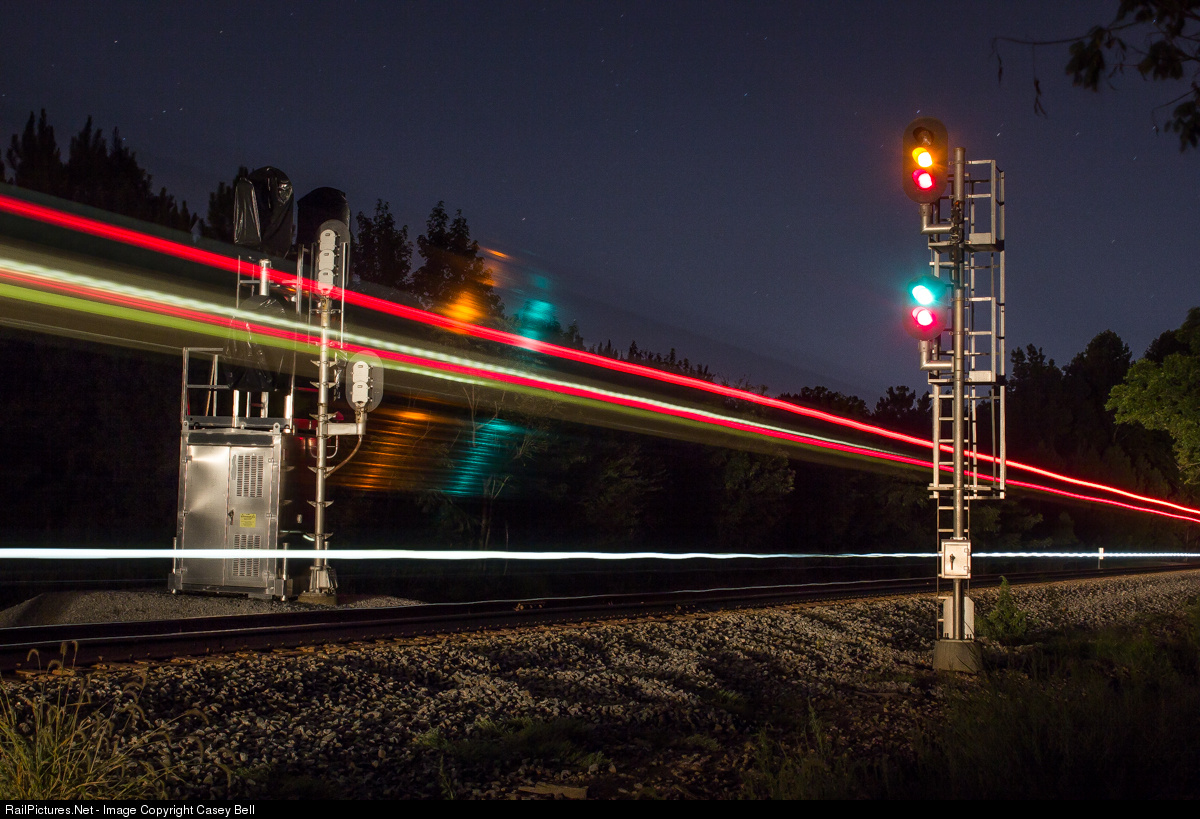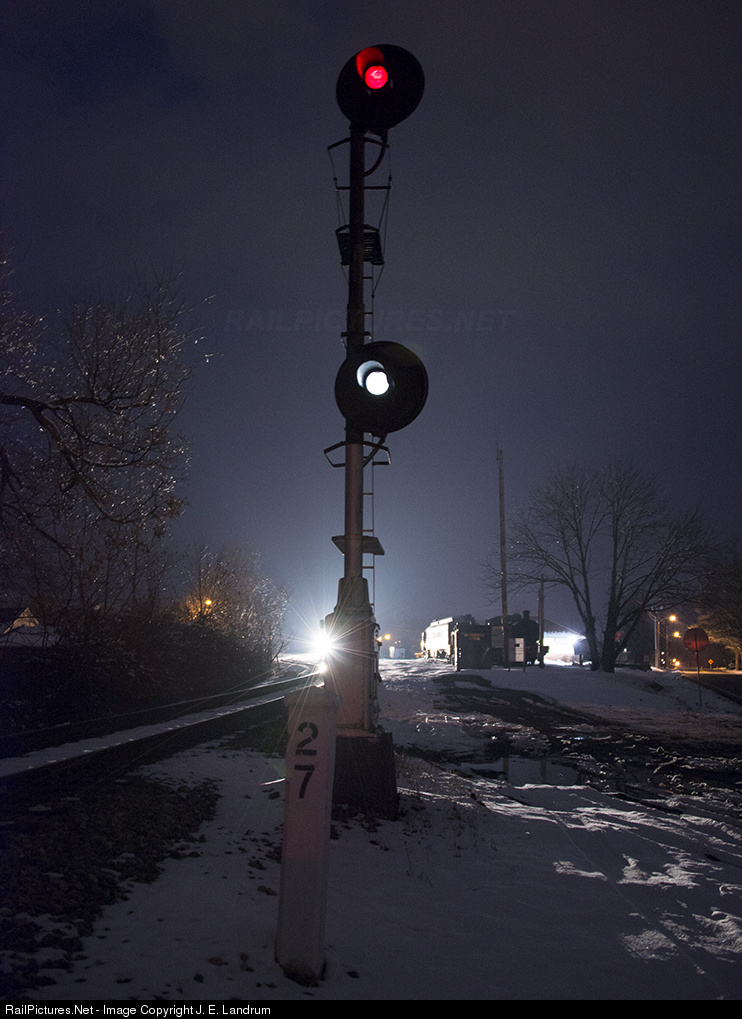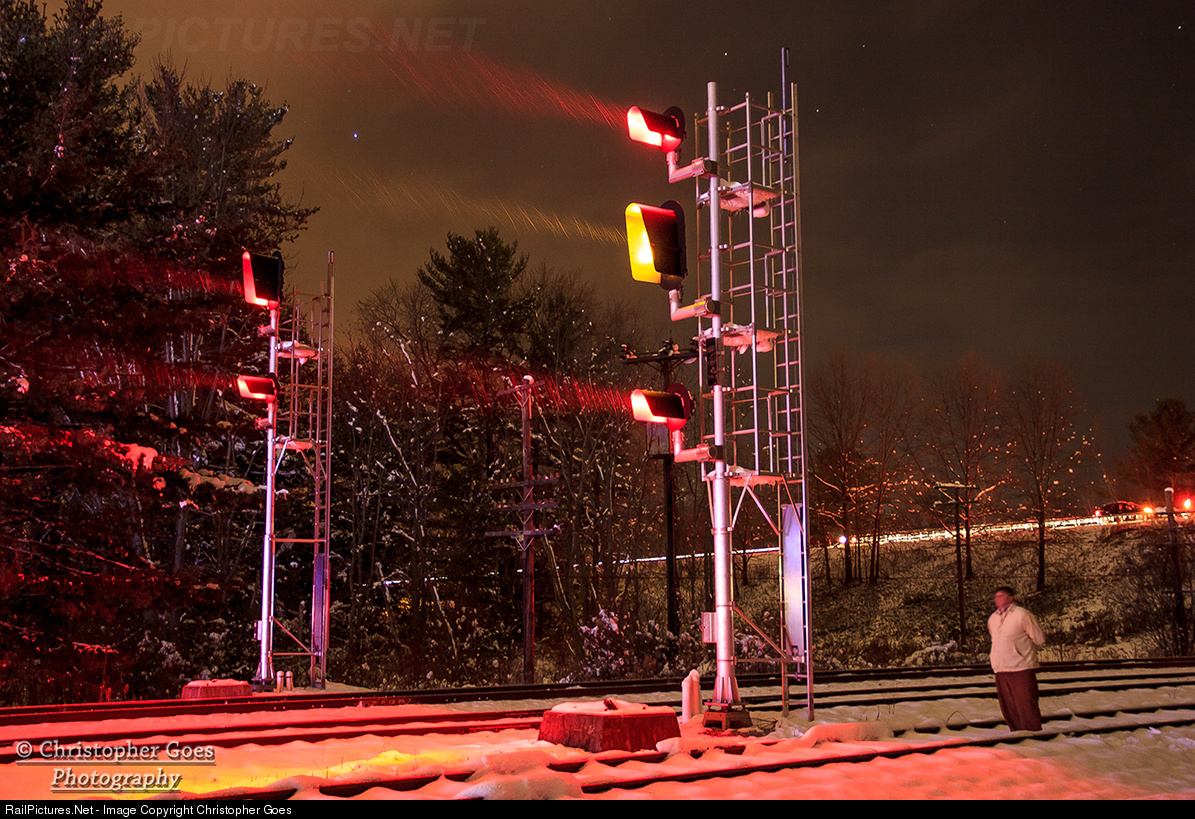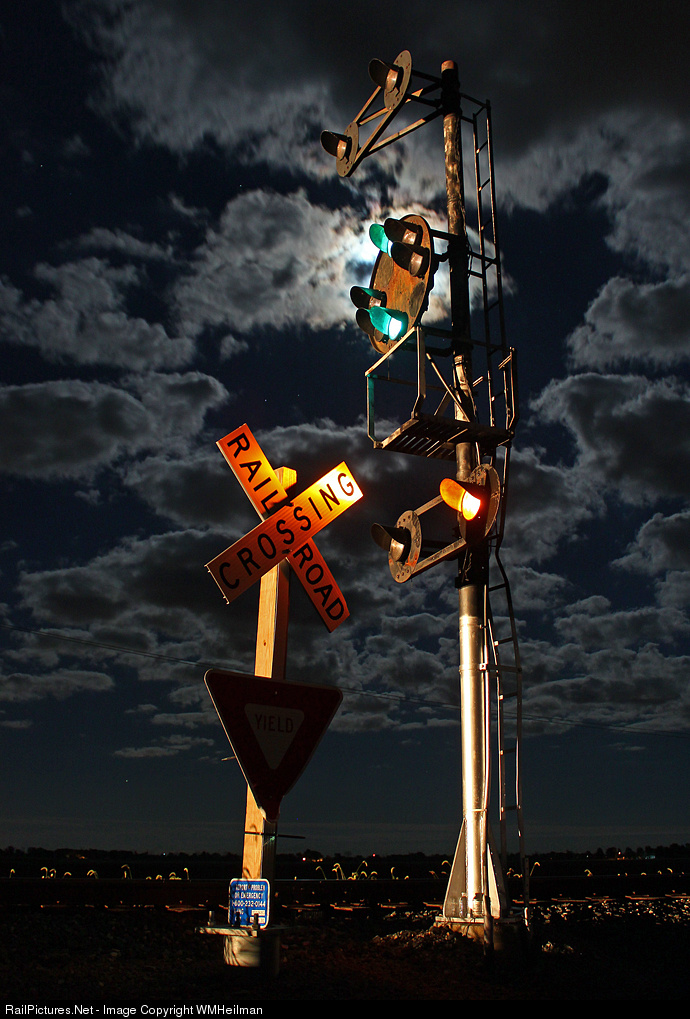A really great way to make your photos look awesome is to go out at night and set up a long duration exposure. It might be a little more complex than that, but not much and night shots have always been some of my favorite instances of railroad photography. Another thing night photography excels at is capturing railroad signaling and for today's installment of Caught on Camera, I have come across a few examples that have managed to capture some interesting signaling phenomia.
In our first example we have Amtrak's Crescent knocking down an Approach Diverging indication on a Southern style intermediate signal on the former Southern Main Line. The signal in question is a quasi-modern replacement for the less modern signal facing the opposite direction. The older signal exhibits the offset head style that was once popular to denote automatics before number plates became standard. The camera shutter was left open long enough to capture the signal dropping from Y/G to R/R.
Here we see an example of a "Bottom Yellow" style searchlight signal displaying a route into non-signaled trackage. Bottom Yellow restricting displays a R/R/Y indication while omitting the middle red marker to save on costs. As you can see this Bottom Yellow aspect has been modified by CSX to use Seaboard style indications with lunar white in place of yellow, creating a bit of an anachronism in the process.
N&W CPLs are spectacular at any time of day, however this pair of automatic bracket signals in West Virginia is demonstrating a feature of some CTC systems (typically GRS Traffic Control System brand CTC) to allow blocks to "float" if no route was signaled into them. This resulted in indications better than Stop and Proceed being displayed in both directions. The alternative to this setup would be to have a "traffic lever" that would need to be "thrown" to set the flow of traffic. Note that the reverse signals are both at Approach and have lower heads confirming that the next signal down the line is an interlocking.
While the old D&H searchlights at the north end of the Saratoga Springs station have been replaced by LED Darth Vaders, it is still possible to see them in a good light. Here the siding track mast displays a Medium Approach onto the main at CPC-37 in all likelihood for a movement onto the unsignaled North Creek branch at CPC-38. The presends of single lamp lower heads indicates that unlike CSX, Canadian Pacific has chosen not to spend the extra money to upgrade the CTC to support Restricting indications into long sections of single track.
Finally we see this stalwart B&O CPL in the Deshler, OH area displaying the rarest of B&O signal indications, Medium Approach Slow which involves a yellow lamp on the 4 o'clock orbital. Both the 4 o'clock and 2 o'clock orbitals were given yellow lamps instead of clear glass lenses to avoid confusion with the "Approach Medium" speeds on the 8 and 10 o'clock lamps,
I'm sure some might argue that flashing green | Slow Clear might be rarer since few locations were given that upgrade, but that's not really one of the original set so I don't tend to count that.
A blog devoted to explaining the ins and outs of North American railroad signaling, past, present and future. This blog seeks to preserve through photo documentation the great diversity and technical ingenuity of 20th century signaling and interlocking hardware and technology. Related topics cover interlocking towers and railroad communications infrastructure.
Note, due to a web hosting failure some of the photos and links may be unavailable.
Search This Blog
Tuesday, December 16, 2014
Caught on Camera - Episode 5: Night Shots
Labels:
BnO,
Caught on Camera,
CP,
CPL,
CSX,
DnH,
NnW,
NS,
position light
Subscribe to:
Post Comments (Atom)





Orbitals...they are called marker lights and sadly this CPL signal has been replaced. :(
ReplyDeleteI've seen the term "Orbital" in a number of sources and I think it works better than "marker light" which is usually a single lamp below the main signal.
DeleteAll the pictures are awesome, but the last picture is amazing. (Or perhaps I have a soft spot for CPLs.)
ReplyDeleteWell please click the images and give the photographers some faves.
Delete